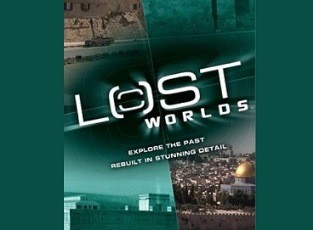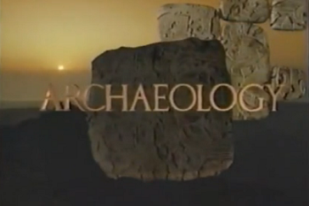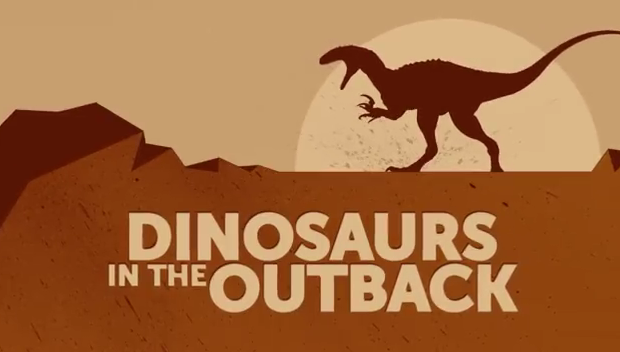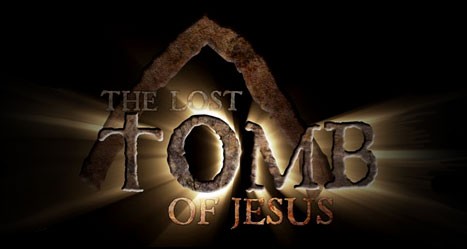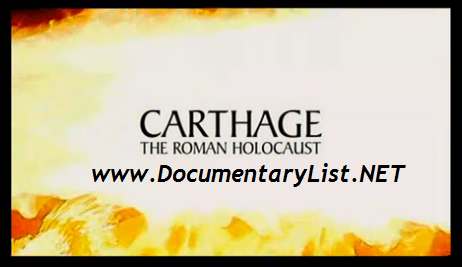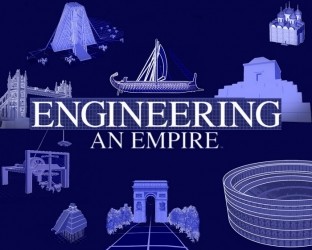The series features various subjects related to science and technology. Some of the views expressed might be considered fringe or pseudo-science and some of the scientists may present opinions which have not been properly peer-reviewed or are not widely accepted within their scientific communities, in particular on topics such as Bermuda Triangle or Atlantis for example.
Season 1
Episode 1 Killer Asteroid – An untold number of asteroids have slammed into Earth over millions of years. Scientists are now monitoring the skies watching for the next big one and considering options on how to prevent the next major impact. Documentary exploring the possibility of a meteorite wiping out the human race, examining evidence of past collisions on both the Earth and the Moon, including the impact that supposedly led to the extinction of the dinosaurs. Scientists also discuss current research projects designed to avert such a disaster, involving high velocity gas guns, solar weapons, and using a spacecraft to nudge dangerous cosmic debris off course.
Episode 2 Super Volcano – Yellowstone, Wyoming. In spring 2003, strange things began happening in America’s most famous national park. The tallest geyser in the world, which can go 50 years without erupting, burst into life. Spraying columns of super heated water, 100s of feet into the air. There were new cracks in the ground, the ground heated up to the point where the National Park Service had to close some trails. Not long after, a group of bison collapsed and died, victims of poisonous fumes from below the ground. Satellite pictures revealed that something ominous was happening beneath the earth. On the internet, unfounded rumours spread that a super volcano, an eruption so large, that it only occurs on average every 700,000 years, was about to blow. These things happen, you can look at the earth and see the scars. They happen, and they’re going to happen again. A million times more powerful than Hiroshima, super volcanoes are real events. Over 20 have been recorded in the history of the earth and over half of these happened in the USA. For the last 30 years scientists have been investigating where the next super volcano could erupt. Their research has revealed that an active super volcano exists under Yellowstone National Park. Naked Science follows these scientists and investigates the vital question, if the Yellowstone Caldera erupted today, could we survive? This documentary includes a Yellowstone timeline of past eruptions, how Yellowstone would affect the world and what impact will it be for the United States.
Episode 3 Angry Earth – What can science tell us about the fury of our Angry Earth? Can science do anything to protect us? Might we one day be able to predict the quakes? Or are we at the mercy of the awesome power of nature? Around the world, millions live under the threat of an earthquake disaster. In the last century, more than 1 million people died in earthquakes. Over the next century, it is feared that number could increase ten-fold. Why? Because Earthquakes don’t kill people. Buildings do. And urban populations are increasing so fast that we now have “mega-cities”. We discover the seismic vulnerability of some of the world’s mega cities and the threat posed to millions of people all over the world.
Episode 4 Who Built Stonehenge? – Stonehenge England’s most mysterious ancient monument, on a site older than the Pyramids of Ancient Egypt. 85 massive stones, some weighing more than 40 tonnes, stand guard on a remote and wind-swept plain. Why is it here, what is it for, how was it built? The answers are lost in the mists of time. Myth links Stonehenge to England’s mysterious druids, Celtic priests said to have practiced ritual sacrifice. What we do know is that some of the rocks at Stonehenge were transported more than 200 miles across the waters of England’s widest tidal estuary. Naked Science demonstrates how these stones could have been carried such a vast distance, and raised into place, using just the primitive technology possessed by Ancient Britons almost 5000 years ago. And, for the first time, the film employs modern forensic investigation techniques to examine human skeletons found near the site and recreates the face of one man who may have worked on the construction of this astonishing, ancient structure.
Episode 5 The Deadliest Shark – Experts compare the deadliness of bull, white, and tiger sharks, as well as profile their biology and behavior. The cause of shark attacks and what can be done to prevent them is discussed. Since sharks generally cover territories of several hundreds of miles, efforts to rid them from particular beaches are usually unsucessful. Sharks also use their mouths to examine their surroundings and determine what is and isn’t food, leading to many shark attacks against humans.
Episode 6 Bermuda Triangle – Ships and planes vanish without a trace. The Triangle goes by many names, The Vile Vortices or The Devil’s Triangle. There are also debates as to its boundaries. But at the centre of the myths and legends are the 450,000 square miles of island strewn ocean between Miami, Bermuda and Puerto Rico. Said to be a mysterious vortex claiming lives, ships, and planes at will. Some are never found, others turn up as gravestones on the ocean floor. Among such feared supernatural phenomena as UFOs and alien abduction, the Triangle is a serious contender. This programme sets out to unravel its secrets, finding out what lies behind the myth. Flying into the heart of the Bermuda Triangle.
Episode 7 Atlantis – A disaster is looming. A fabulous city, rich in culture, and technological advances, is about to be destroyed. Buildings, people, an entire civilisation, swept away by an overwhelming natural disaster. The legend has entranced scientists and scholars for centuries. In this episode Naked Science goes in search of the most enduring myth of all, The City of Atlantis, lost beneath the waves to a massive natural cataclysm some 11,000 years ago. We know very little of Atlantis, in fact were it not for the writings of the Greek philosopher Plato we might not have encountered it at all. Plato, recounting a story he heard as a child, described a huge metropolis, rich in fine art, architecture and culture. The city was destroyed in the space of a day and a night, sunk beneath the waves for eternity by a massive natural cataclysm. For thousands of years the tale remained an obscure yet tantalising fable until an American by the name of Ignatius Donnelly reignited the idea, bringing it to worldwide attention and sending archaeologists and trophy hunters alike across the globe in its wake.
Episode 8 Alien Contact – Just for a moment, imagine, a universe awash with life, where we humans are not the only intelligent beings around. What might these alien races look like? Could we communicate with them, or even recognise them as intelligent? And what would they make of our violent and dangerous species? Might they take one look, and decide not to bother with such primitive beings? A planetary nursery filled with spiteful, galactic infants. On the other hand, in our imaginary scenario, they may enrich us with scientific knowledge beyond our imagination. Or could an encounter with aliens have a more destructive outcome? It could be a bad day for human kind. But relax, it’s just make believe, it could never happen, could it? A mysterious crash in Roswell, New Mexico during the 1940s convinced many that our planet is being visited by space aliens. Crop circles in Britain have only added fuel to the fire. Few scientists doubt that life indeed exists elsewhere, but some believe we’re more likely to make contact via radio waves. Join the search for extra-terrestrials and hear from scientists who think we are on the verge of making contact.
Episode 9 What is Human? – What do you need to compete with the fiercest predators on Earth, to tame fire, to make tools, to survive cataclysmic natural disasters, and ultimately turn yourself from being an ape like creature, into human being? Uncovering the secrets of the dead, we’re looking back millions of years. This is the story of our battle to survive. Our species nearly became extinct. The struggle that eventually propelled one animal to rise above all other creatures on Earth. This is our story, the story of what makes us, human. Evolution, what is human? In the beginning there were amoebas. Then there were fish and then there were walking, air-breathing fish. Then there were apes and then, well, me and you. At some point along the vast evolutionary scale a change occurred, a genetic mutation was born giving rise to a new species, the first “human”. The problem is when? Naked Science travels the globe in search of our earliest ancestor the first animal we can say is undeniably not an ape, but one of “us”.
Episode 10 Angry Skies – Wind is the flow of gases on a large scale. On the surface of the Earth wind consists of the bulk movement of air. Wind is caused by differences in atmospheric pressure. When a difference in atmospheric pressure exists, air moves from the higher to the lower pressure area, resulting in winds of various speeds. The wind is a powerful, invisible force. It reshapes landscapes, destroys buildings, and wrecks lives. In a single day a severe storm can cause over 10 billion dollars of damage, and when violent winds rip through a city they can kill dozens of people and seriously injure hundreds. Looking at the deadliest winds on Earth, within massive carpet-bombing hurricanes, and violent surgical strike tornados, we meet the people who risk their lives to warn us of the storms. What is the fastest wind ever experienced? We discover just how fast a wind a person can take, and join the scientists in the front line, to discover the latest weapons in battle against these deadly winds. And can anything be done to reduce the wind’s cause. To find out, Naked Science investigates the United States’ most powerful storms to answer the question, can we tame the wind?
Once again we are reinstalling DocumentaryList.NET server software from scratch.
This time we are trying to make it compliant with Google's requirements to serve ads and come up in search results properly showing that documentaries are available to watch on this site for free, no logins and no paywalls.
We are starting only with documentaries that have been verified working in the last 30 days. That's just about 100 docs, but we will add more every day.


